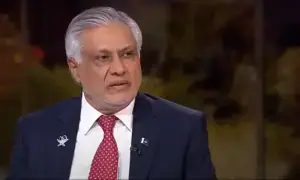The long suffering or how I learned to talk about my pain
I let a man nearly break my back because he said it would end the pain.
This is just one of the routes I have taken to find relief. The aforementioned shaman and others of his ilk are some of the kookier routes I’ve tried for pain management — all packaged under the guise of healing. I’ve pursued physiotherapy and other rehab work as well as acupuncture, cupping, trauma relief exercises, psychotherapy, CBD oil and now, under guidance, psychoactives like THC and psilocybin (not together, obviously).
You’d think with all this experience in pain management, I’d be a pro at articulating my pain but that’s not been the case. I’ve been conditioned into believing there is nothing unique about my pain; for example, all women have period pain so I should suck it up. This inability to use words for pain frustrated doctors who then asked me put a number to it on a scale of 1 to 10, using the Mankoski pain scale. 1 to 3 is mild, nagging, annoying, for example while 7 is makes it difficult to sleep.
It turns out I was bad at both words and numbers.
In her 2014 collection of essays, The Empathy Exams, Leslie Jamison wrote: “The ancient Greek Menander once said: ‘Woman is a pain that never goes away.’ He probably just meant women were trouble, but his words hold a more sinister suggestion: the possibility that being a woman requires being in pain, that pain is the unending glue and prerequisite of female consciousness.”
Ask a woman who gave birth to rate her labour on a scale of 1 to 10 and she’ll likely say 11. We’ve come to expect from women that they will give birth so that pain is normalised. I met a traditional birth attendant sometime early in my journalism career who told me her patients went back to tilling the fields a day after giving birth in the village. She said something like pain was a luxury the rich could afford.
A woman’s pain is dismissed around the world, or not taken seriously, even the subject of jokes. Such dismissiveness has resulted in women being silenced, accepting pain as hereditary, fate or turning to find answers for themselves. When I began reading on the bias in women’s diagnosis and treatment for pain, I felt like I was drowning in the literature. One study in 1989 showed women were half as likely to get painkillers after surgery than men. Another showed that women were seven times more likely to be discharged in the middle of a heart attack.
Researchers at the University of Maryland in 2001 discovered bias against women seeking pain treatment. They found men were more likely to be given medication for their pain while women would be given sedatives and while “women are biologically more sensitive to pain than men … [their] pain reports are taken less seriously.”
When 22-year-old Naomi Musenga called for an ambulance in France in 2018 complaining of abdominal pain, she said she felt like she was going to die. The operator told her she “would definitely die one day like everyone else.” Musenga did make it to the hospital where she died a few hours later -- and her story received a lot of coverage. When the media asked that operator if she regretted her comments, the operator admitted the remark was “inappropriate” but blamed work pressure. The article then went onto describe just how much pressure emergency operators are under and even the likelihood of dying from stomach pain. The BBC also reported Musenga wasn’t able to properly describe her stomach pain in her call to the operator and that she initially called the wrong number. They may as well have blamed Musenga for her death.
According to a 2017 article in Harvard Health, chronic pain affects 70 percent of women yet 80 percent of research into it is conducted on male mice or men.
All these studies just remind us that male health is a priority.
What, you wonder, can be gained by erasing female pain?
Or, another way to ask is who benefits from viewing women’s pain as imaginary and not biochemical -- i.e. the result of inflammation, which is what pain is. Who benefits from keeping women in the box of frail creatures that need a man to protect/save them?
Women’s pain is real. It is not their lot in life; pain cannot be internalised or remain invisible or be used to keep someone in poverty or in quotas. The pain has been buried deep for too long and it must be tended to, and not just by medical professionals. I’ve just begun to share my story in the hope that someone is listening.
The writer is head of digital properties at Aaj News at tweets at LedeingLady.




















Comments are closed on this story.